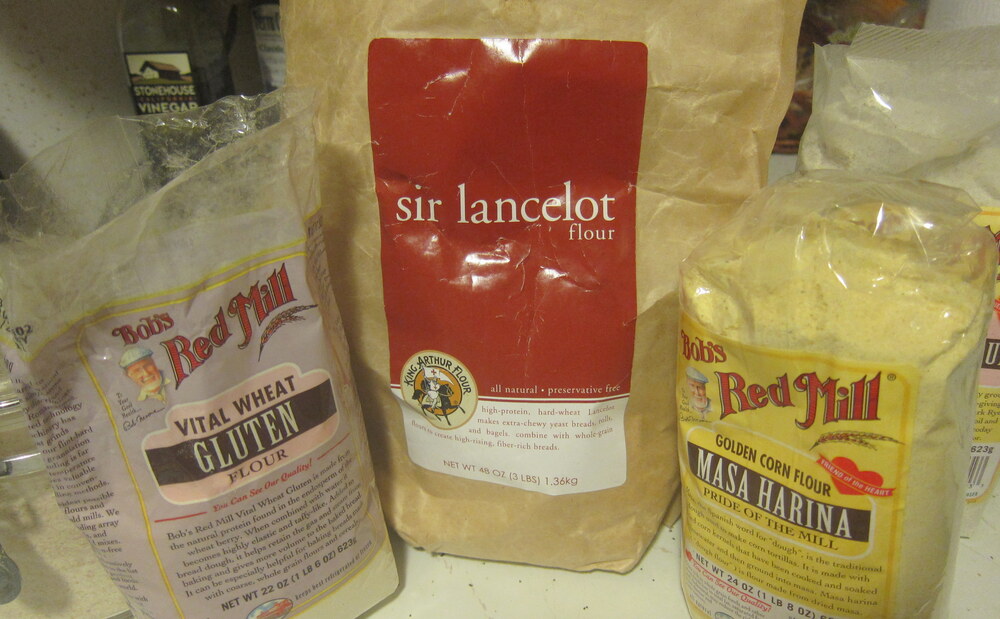Some typical flours and their protein percentages:
- Cake or pastry flour: 8-9%
- Generic all-purpose flour: 10.3%?
- King Arthur all-purpose flour: 11.7%
- Generic bread flour: 11.7%?
- King Arthur bread flour: 12.7%
- King Arthur whole wheat flour: 14% <-- though I believe the protein / gluten relationship in whole wheat is different, because some of this protein is in the bran yet not available to promote gluten formation.
- King Arthur Sir Lancelot high-gluten flour: 14.2%
- Bob’s Red Mill Vital Wheat Gluten: 75%
Why am I posting this? Mainly because I’m about to post a bagel recipe, and having a high-protein flour really does matter for them.
I’ve tried making the same bagel recipe with:
- All-purpose flour (a terrible, soft result)
- King Arthur bread flour (decent bagels, a few friends liked them best in a blind taste test, though I preferred the slightly higher-protein flours)
- Sir Lancelot high gluten flour (great result, but you have to mail order the flour)
- A mix of 1 tsp vital wheat gluten in every 1 cup King Arthur bread flour (should also be about 14% protein, and also gives a great result, and you don’t have to special-order the flour).
- 2 tsp vital wheat gluten to every cup of all-purpose flour, which should also be about 14% protein. This has also worked well for bagels though not as consistently well as #3 (perhaps more careful sifting together is needed, or the % protein was lower than expected in this flour).
If you really want to geek out on it, here’s an online protein % calculator, which helps you figure out how to mix several flours or flour and wheat gluten to get a specific desired protein %. If you care that much about precision, you should probably weigh flour instead of measuring it, but I rarely have the patience (a sin among bakers, I know).
